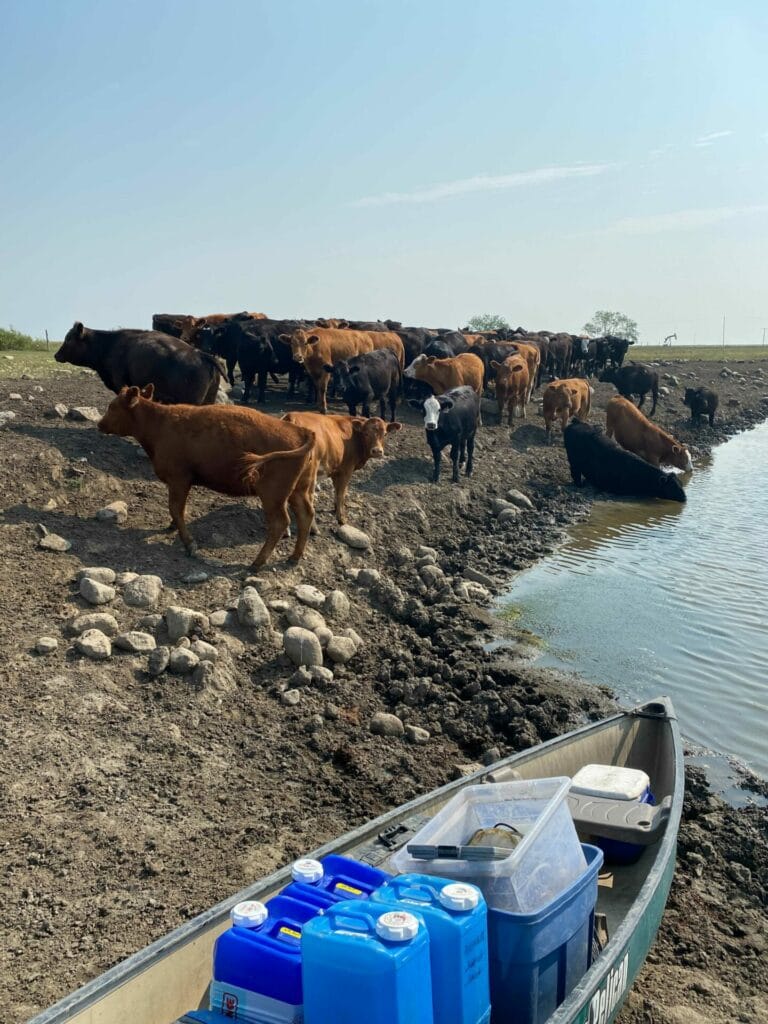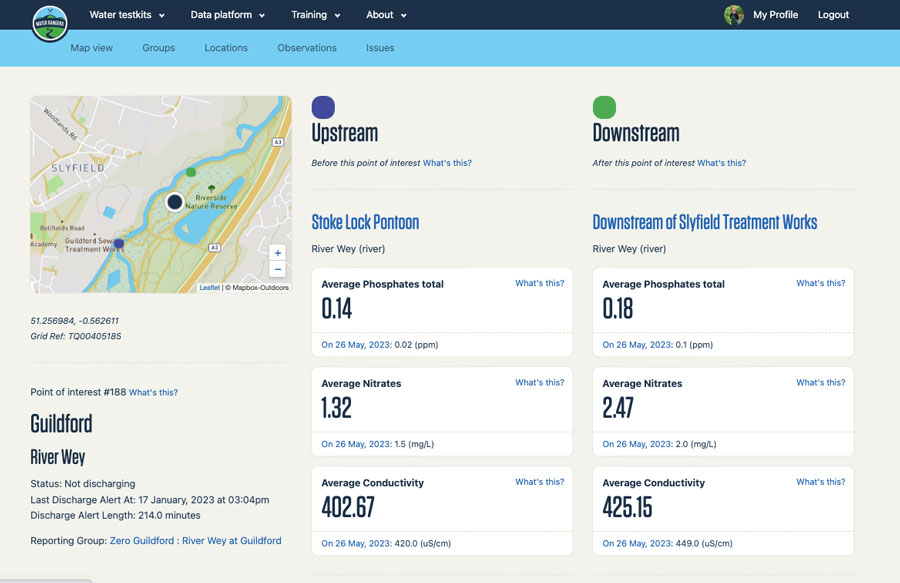Step 1: Choose a sample location
First, what is your monitoring objective?
The most important factor in choosing your sample locations is that they help you to meet your water monitoring objectives. In other words, what is the reason you’re monitoring, or what is the problem you are studying? Make sure you know your own or your group’s goal/objective before you choose your sites.

Most Water Rangers’ volunteers are testing water in order to fill data gaps for under-monitored or unmonitored water bodies. Their objective is to collect baseline water quality, which provides general information on water health and allows us to analyze trends over time.
Others, such as our volunteers in Saskatchewan, have a more specific objective, such as the impact of agricultural runoff on nutrient levels in cow dugouts.
Here are some other examples of monitoring program objectives:
General/Broad objective
Collect baseline water quality in an under-monitored or unmonitored watershed to understand basic health of water body. Samples locations in this case are the mouths of watercourses, the middle of lakes, and off shore sites, with monitoring frequency 1 time per month minimum with 5 sets of observations collected per season.
More specific objective
An example of a specific or refined monitoring objective would be to determine is your watershed is impacted by road salts. In this case, the monitoring program’s sites are chosen accordingly so that they capture road salt flushing in surface water during rain or snowmelt events. They monitor parameters associated with road salts, such as chloride and conductivity, and interpret their results against existing criteria or guidelines.
Established objective
Samples collected monthly to measure for total phosphorus and E.coli to determine if agricultural activity or sewage in the watershed increases nutrient or contaminant levels. In this case sample sites are established upstream and downstream of farm or sewage outfall. Check out our new Points of Interest feature on upstream and downstream sampling.

Monitoring location selection checklist
Once you have your objective, here are some other things to consider while choosing your sites:
- Your sites should be chosen because they help you meet your monitoring objective
- Your sites should be representative of the area under study.
- Your sites should be safe and offer safe access to the water.
- Your sites should not be on private property, unless you have permission
- Your sites should not duplicate other people’s work. Check Water Rangers map or DataStream for existing monitoring programs or sites to avoid duplication
- Can you get back to this site regularly and safely?
The following are general considerations for site selection:
Test site location guide
| Site type | Sampling location details |
| Mouth of watercourses | Sampling at the mouths of watercourses can reflect all upstream inputs. Upstream of tidally influenced areas can capture freshwater conditions. When sampling in a river, stream, creek, channel mouths, etc. start downstream of your sampling location then move into place. You are aiming for a spot mid-stream, facing the current. Be mindful of disturbing sediment at the bottom. |
| Watercourses – midstream | When sampling in a river, stream, creek, channel, etc. start downstream of your sampling location then move into place. You are aiming for a spot mid-stream, facing the current. Be mindful of disturbing sediment at the bottom. |
| Shore (freshwater or marine beach) | Start by wading out into the water until you are about 0.5-1m deep. You want to be facing the current (i.e. facing the waves). Be mindful of disturbing sediment at the bottom. See water safety page for beach safety. |
| Deepest point in lake (boat) | Sampling the deepest point of a lake reflects overall lake conditions. You’ll need to access this site by boat (motor or paddle). When sampling by boat, your first step is to move the boat to the sampling location. Reacher sticks and sampling poles are great tools for sampling from a boat. |
| Bridge | Sampling from a bridge, especially if there is traffic, requires extra safety precautions. If arriving by vehicle, park on the shoulder near the bridge and turn on vehicle hazard lights. Wear a reflective safety vest. Tests should be conducted from the centre of the bridge. You’ll very likely need a reacher stick, sampling pole or rope to reach the water. |
| Pier or dock | Start by walking out to the end of the pier or the dock. From the end of the pier or dock, face the current. The reach stick is a great tool when sampling from a dock or pier. |
| Upstream and downstream combination- Near suspected or known contamination points | In this case you would have two sample locations: upstream (control) and downstream (influenced by contamination). Choose a location upstream of the activity or impact of concern (sewage/stormwater outfall, roadsalt source, eroding streambanks or agricultural activity), or input (e.g., tributary). The second site is located downstream of the activity or impact of concern. By comparing water quality at the two sites and looking at trends over time we can isolate an impacted area or the impact of the activity of concern (e.g., industrial projects, resource extraction, sewage outfalls, etc.) |
Helpful links
- SURFACE WATER QUALITY STEWARDSHIP TOOLBOX Community-based Water Monitoring: Start Up Guide, Ministry of Environment and Climate Change Strategy, British Columbia
- GUIDANCE MANUAL FOR OPTIMIZING WATER QUALITY MONITORING PROGRAM DESIGN, Canadian Council of Ministers of the Environment
Ask an expert: Tips on taking good samples
Melanie Dodd-Moher from Mississippi Valley Conservation Authority (3:19)
